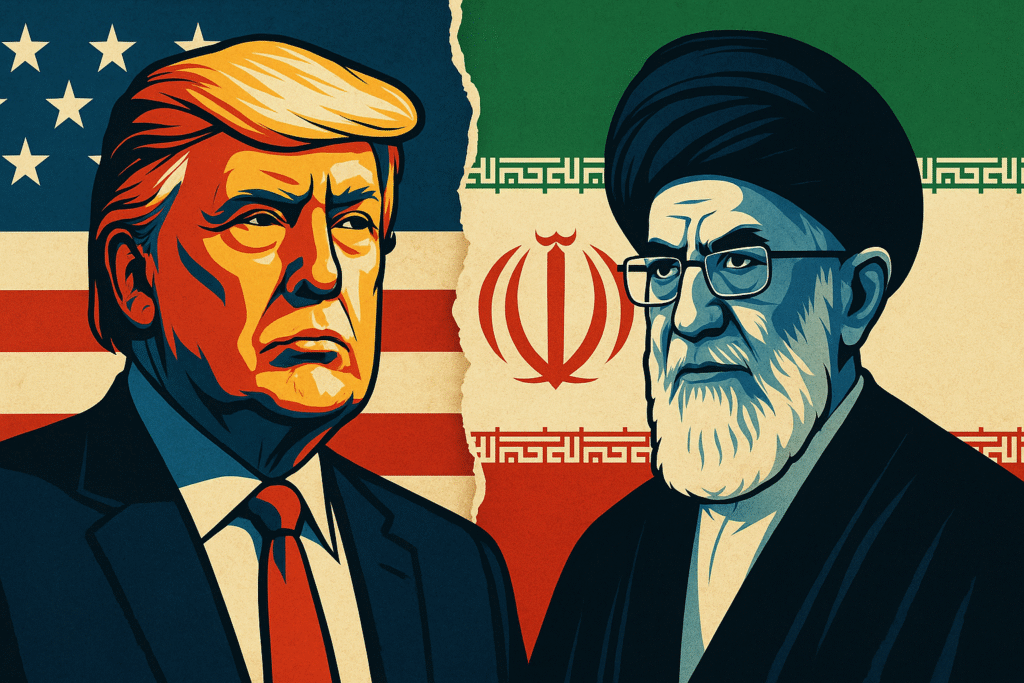In a whirlwind 48-hour sequence, former U.S. President Donald Trump shifted America’s posture toward Iran from military aggression and calls for regime change to a sudden ceasefire announcement. The dramatic turn of events reflects Trump’s volatile foreign policy approach and his preference for rapid, high-profile outcomes.
From Bombs to Peace Declarations
It began on Saturday with Trump ordering B-2 stealth bombers to target Iran’s nuclear facilities using bunker-buster munitions. The move effectively brought the United States into Israel’s ongoing conflict with Iran.
By Sunday, Trump was publicly suggesting the possibility of regime change in Tehran — a signal welcomed by neoconservatives but concerning to his nationalist and isolationist allies. The following day, he reversed course entirely, declaring via Truth Social that a “complete and total ceasefire” had been agreed upon by Iran and Israel, ending what he called the “12 Day War.”
Why the Sudden Shift?
The catalyst for Trump’s abrupt pivot appears to be Iran’s restrained response to the U.S. airstrikes. According to Trump, Tehran launched missiles at a U.S. base in Qatar but warned Washington in advance, and no damage or casualties were reported.
While claiming the U.S. had “completely destroyed” Iran’s nuclear infrastructure, Trump praised the ceasefire as a diplomatic achievement. However, no independent verification of the destruction was available as of Monday.
Trump’s Signature Policy Swings
The episode highlights Trump’s characteristic oscillation between confrontation and negotiation — a pattern evident in his past dealings with North Korea, trade partners, and now Iran. Analysts say this unpredictability can be both a bargaining tool and a destabilizing force in global affairs.
Former U.S. envoy Dennis Ross noted that Trump’s rhetoric served as a warning: if Iran retaliates further, the U.S. might escalate its campaign to target the core institutions of the Islamic Republic.
Zineb Riboua of the Hudson Institute added that recent Israeli strikes likely demonstrated Iran’s vulnerability to Trump, pushing him to capitalize politically. “He sees collapse as plausible and wants credit for it,” she explained.
Conflicting Signals from the Administration
Despite Trump’s suggestion of “new leadership” in Iran, senior officials such as Vice President JD Vance and Defense Secretary Pete Hegseth publicly denied any intention to pursue regime change. White House Press Secretary Karoline Leavitt defended Trump, arguing that if diplomacy fails, the Iranian people have a right to demand change.
These mixed messages triggered a backlash among Trump’s MAGA base. Some, like Representative Marjorie Taylor Greene, praised Trump for securing peace, while others expressed concern about veering toward neoconservative interventionism.
Charlie Kirk, a leading pro-Trump commentator, emphasized that Trump favored a “bottom-up” uprising in Iran rather than U.S.-led regime change, calling it an “organic revolution.”
Skepticism and the Road Ahead
Foreign policy experts caution against interpreting the ceasefire as a long-term solution. Robert Satloff of the Washington Institute for Near East Policy argued that Trump likely still prefers a negotiated settlement — one that could include sanctions relief if Iran complies.
He also rejected comparisons to George W. Bush’s 2003 invasion of Iraq, noting that while Israel has begun targeting key regime assets like Evin Prison, the U.S. has not assumed responsibility for governance or post-regime planning in Iran.
Rajan Menon, a political science professor at The City College of New York, suggested Iran might feel pressured to accept a nuclear agreement to avoid further U.S. pressure. However, he warned that any sign of submission could undermine the regime’s credibility internally.
Conclusion
Trump’s Iran strategy — marked by surprise airstrikes, public threats of regime change, and abrupt peace declarations — encapsulates his broader foreign policy style: unpredictable, theatrical, and high-risk. Whether this approach leads to lasting peace or further instability remains uncertain.
Let me know if you’d like this article translated into Arabic, adapted for social media threads, or designed as an infographic.



